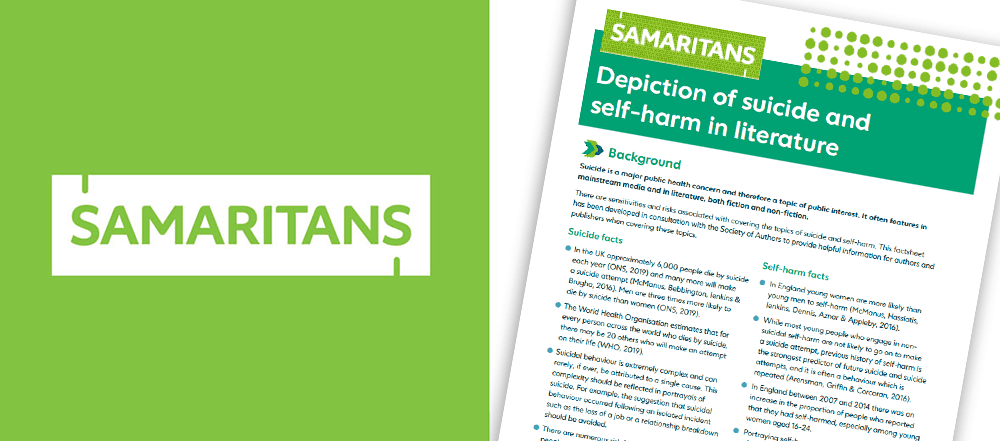
UK charity Samaritans has published a practical factsheet for authors and publishers on the depiction of suicide and self-harm in fiction, non-fiction and other media.
Developed in consultation with the Society of Authors and writer Nicola Morgan, the factsheet presents statistics on suicide and self-harm, and evidence of the negative impact that creative works can have, while offering a range of practical considerations for authors and publishers to inform their approach to certain narratives.
Why is this necessary?
In the UK, approximately 6,000 people die by suicide each year. Men are three times more likely to die by suicide than women. The World Health Organization estimates that for every person across the world who dies by suicide, there may be 20 others who will make an attempt on their life.
Certain types of media depictions of suicide are linked with increases in suicide rates – a phenomenon known as the ‘Werther’ effect, after Goethe’s 1774 novel. A smaller body of research evidence shows that sensitive portrayals of individuals demonstrating mastery over a suicidal crisis can have a protective influence – known as the ‘Papageno’ effect.
The factsheet is designed to ensure that when authors approach the subject, they can do so from an informed perspective. As Society of Authors’ Chief Executive Nicola Solomon says ‘our main goal behind these guidelines is for authors to feel safe and empowered’ when developing narratives that deal with these sensitive topics.
‘…what’s important is how it is covered…’
The charity writes in the guide:
It’s not that suicide shouldn’t be covered in the media, what’s important is how it is covered … The aim of this guidance is not to deter writers from covering the topics of suicide and self-harm; the aim is to provide evidence-based, useful information to help authors avoid content which could be harmful.
The five-page booklet includes guidance on representing complexity (‘suicidal behaviour … can rarely, if ever, be attributed to a single cause’), portrayal of suicide methods, and language used to describe people, their experiences, and their actions.
‘…Writers want to write about these topics…’
Commenting on the new guidance, Lorna Fraser, Executive Lead of Samaritans’ Media Advisory Service, said:
It was incredibly useful to work with author Nicola Morgan and Society of Authors’ Chief Executive Nicola Solomon to make sure these guidelines were useful to authors, without feeling as though we were reining in anybody’s creativity – or in any way suggesting that topics of suicide and self-harm shouldn’t be covered in literature … we wanted to ensure that there is a responsibility around making sure that those who may write about this topic – particularly those who may have some vulnerability themselves – are aware of the risks, both for themselves and their readers.
Author Nicola Morgan said:
Writers want to write about these topics freely, while avoiding inadvertently causing harm. So, these guidelines are a very useful information and research resource for authors and publishers, rather than a rulebook.
Society of Authors’ Chief Executive Nicola Solomon said:
These guidelines are calm, knowledgeable and offer real context. They are not intended to be a step-by-step guide, but a practical resource to help authors make informed choices about their work. We hope publishers, editors and the wider industry will also learn from and share these guidelines.
Download Depiction of suicide & self-harm in literature below.






